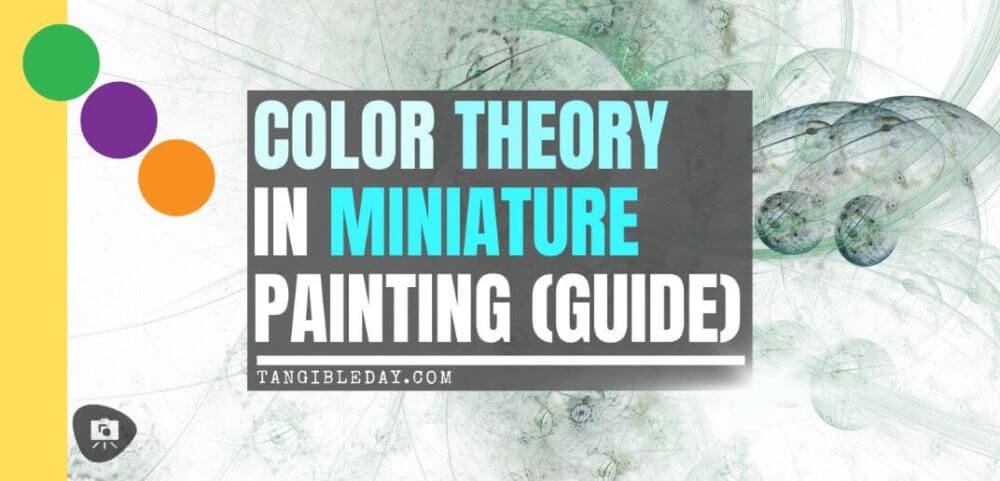Looking for a great color scheme for your miniatures? There are several ways to find the perfect paint schemes for your growing collection of wargaming models, e.g., Warhammer 40k, Bolt Action. All that gray plastic needs paint, but what colors should you use? What works well together? Many will say to learn color theory. But, what is color theory?
In this article, you’ll learn the basics of color theory and how it applies to painting miniatures. While it’s not a necessary piece of knowledge to have, it can be helpful in refining your color schemes. For fun, why not check out my miniature painting gallery to see what I do with color.
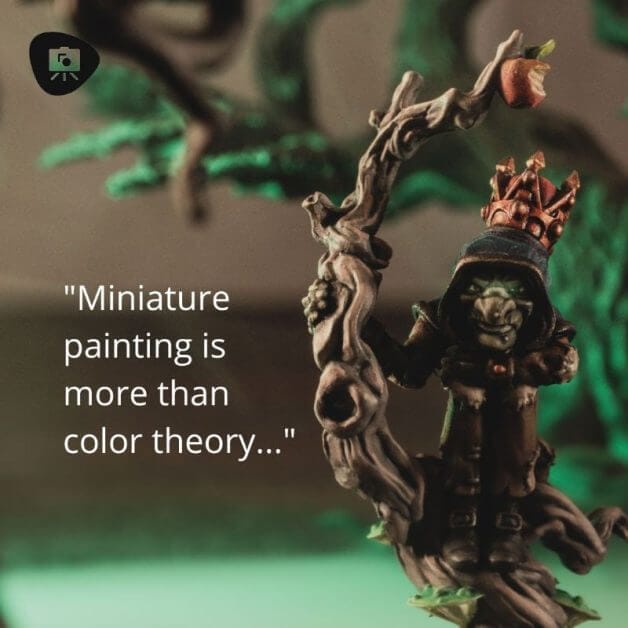
What is Color Theory?
Basically, color theory is the study of how colors interact with one another. It includes the color wheel, which is a visual tool that represents how colors relate to one another.

The color wheel is made up of three primary colors (red, yellow, blue), three secondary colors (orange, green, purple), and six tertiary colors (red-orange, yellow-orange, yellow-green, blue-green, blue-purple, and red-purple).
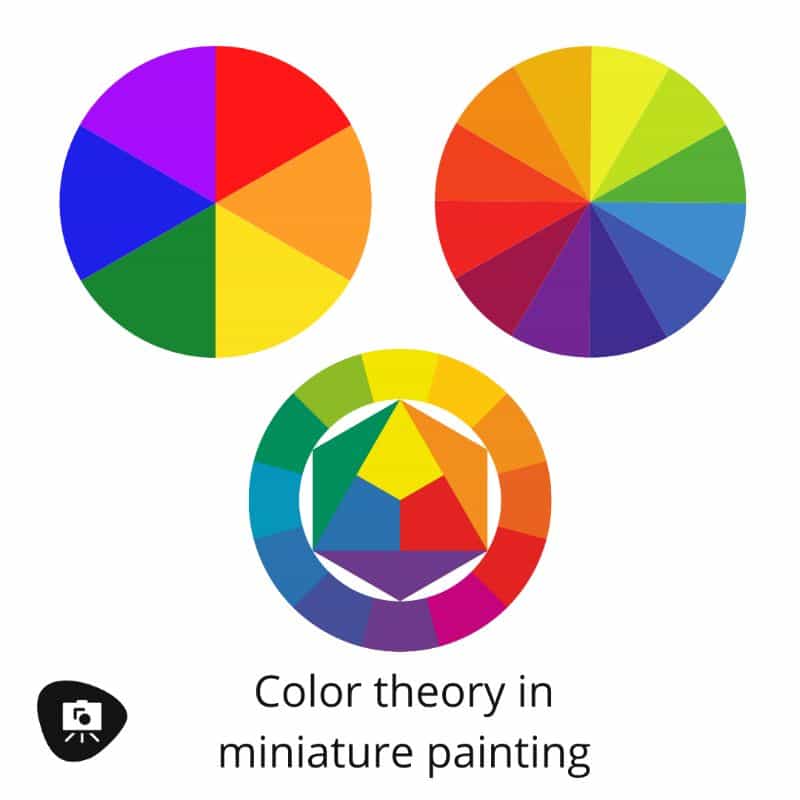
The color wheel can be used to find complementary colors, which are colors that are opposite of each other on the wheel. For example, purple and yellow are complementary colors.
Color theory is all about “relationships”. When you understand color relationship, you are empowered with a skill that will help you develop your artistic vision. Paint miniatures? Color theory can help.
Read on to learn more about other relationships (and how they form a beautiful “family”).
So, How Does Color Theory Relate to Painting Miniatures?
Color theory can be helpful when painting miniatures because it gives you a framework to think about color schemes.
While some miniature painters like myself work through “feel” and intuition, you may find an “outline” gives you the boost to confidently paint a model.
A color scheme is simply a collection of colors that work well together. A good color scheme will make your miniature painting stand out on the tabletop. There are many different ways to create a color scheme, but the most important thing is to choose colors that compliment each other.

This is why color theory is useful. It’s a way to take the guesswork out of choosing colors that work well together.
For example, let’s say you want to paint an army of Chaos Space Marines. You could go with the tried-and-true black and red color scheme (following some reference images), or you could use color theory to find an extended, or completely unique color scheme.
RELATED: HOW TO CHOOSE A COLOR SCHEME FOR YOUR WARHAMMER ARMY
To take it a step further, expanding on the “idea” of black, for example:
You could use orange as your secondary color (instead of red; both warm colors). This would create a high contrast color scheme that would be easy to read on the tabletop. Your models would “pop”.

With this black-orange scheme, you could use purple as your tertiary color–the third main color. This would create a dark, menacing look for your Chaos Space Marines.

On the other hand, you could use green as your tertiary color. This would give your army a more “alien” feel, but with a more “serene” experience.
Have you noticed that I’m using adjectives of emotion, pathos to describe color?
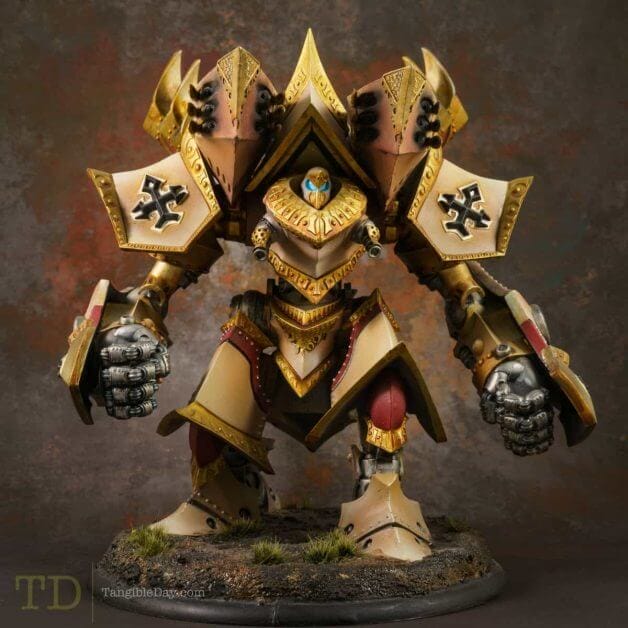
This is color theory in miniatures.
It’s because color has the ability to stir up certain feelings in people. And, as painters, we can use this to our advantage when choosing color schemes for our miniatures. It’s all part of the concept of color theory and the psychology of color: The idea that colors can evoke certain emotions in people.
Yes, color has the ability to stir up certain feelings in people. But, of course, you knew this already!
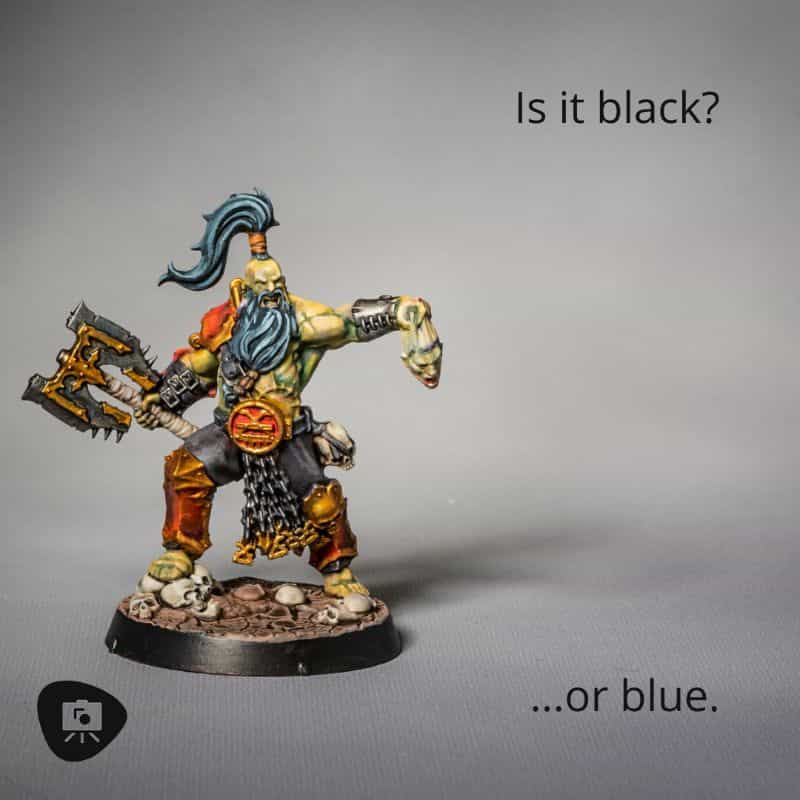
Alright, so as painters, we can also use psychology to our advantage when choosing color schemes for our miniatures–a kind of psychological warfare to make our miniature painting look amazing and draw viewers into our World.
To stick with the purely science part of color, I’ll keep discussing the theory in color moving forward and play with color psychology a bit later.
All you have to know is that, as a miniature painter, you can use color theory to find color schemes that are not only easy on the eyes but also evoke certain emotions in your viewers.
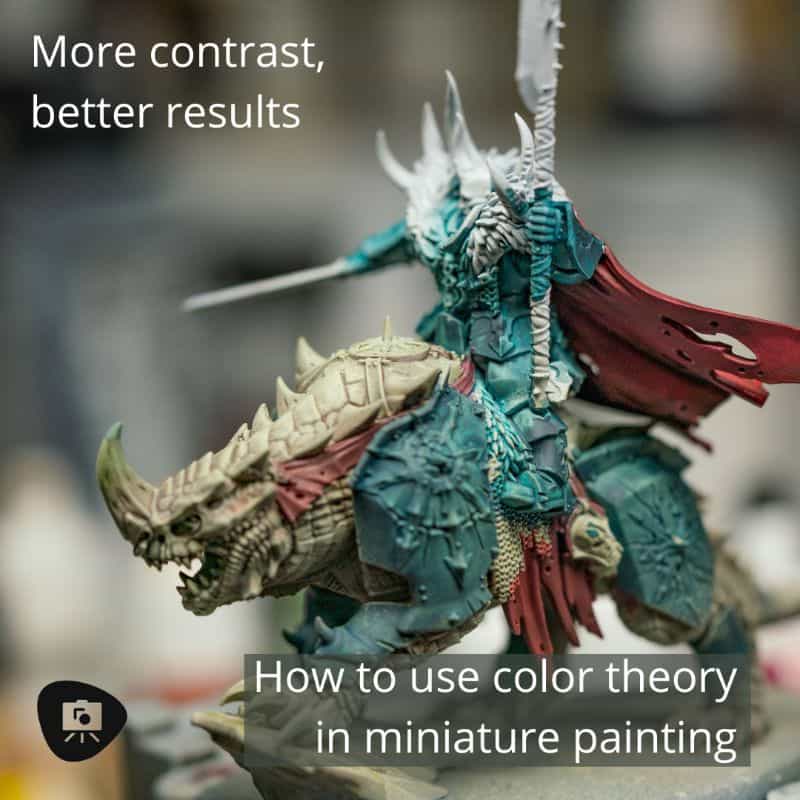
If you are using a wet palette, a wonderful tool for miniature painters, you can start playing with how colors look when they are placed next to each other. Does a blue paint swatch on your wet palette appear bright, more vibrant next to a darker tone of red (or its complementary color)?
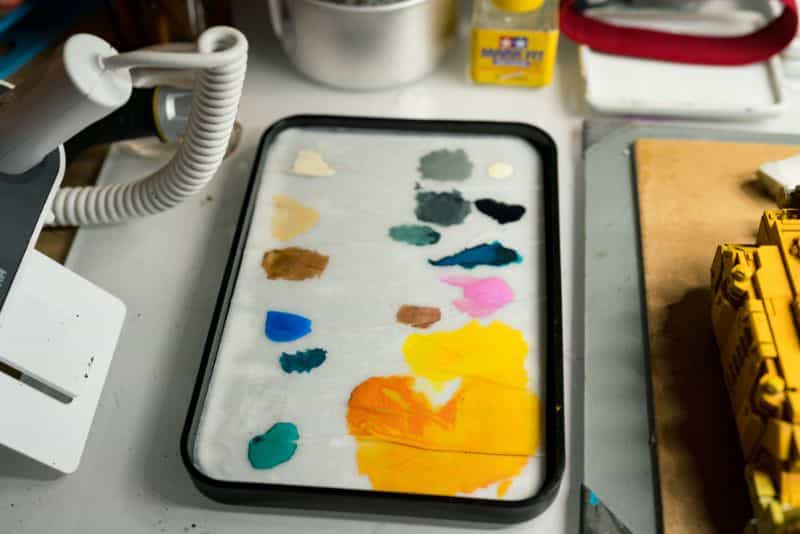
Let’s move on and talk about some of the applications of color theory in miniature painting.
Color Theory Applications in Miniature Painting
The color wheel is the main tool we use to access the power of color theory. It can help us find color combinations that work well together.
Of course, after some practice, you won’t think about these things when you start painting. They will come naturally when you pick up your brush.
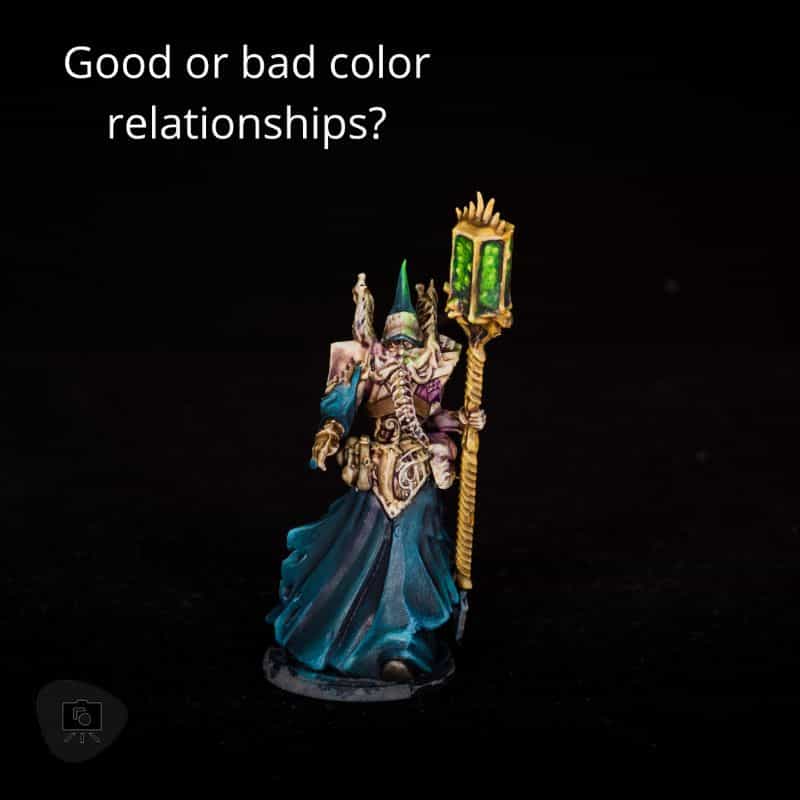
But, it’s good to know the basics so you can fall back on them when you need a reference, or trying to explain to someone else about the reason you choose your paint scheme colors.
Here’s the basic organization of the color wheel (divided into 3 parts):
- Primary color
- Secondary color
- Tertiary color
Primary colors
There are three primary colors are red, yellow, and blue.
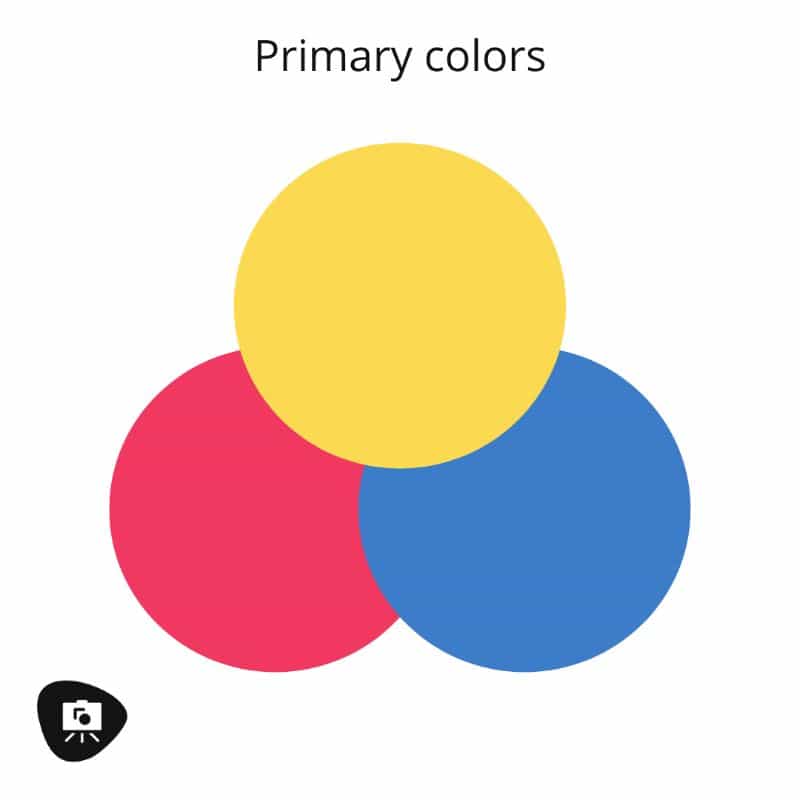
They are called primary colors because red, yellow, and blue can’t be made by mixing any other colors together.
All other colors are derived from these three primaries.
Secondary colors
The secondary colors are orange, green, and purple.
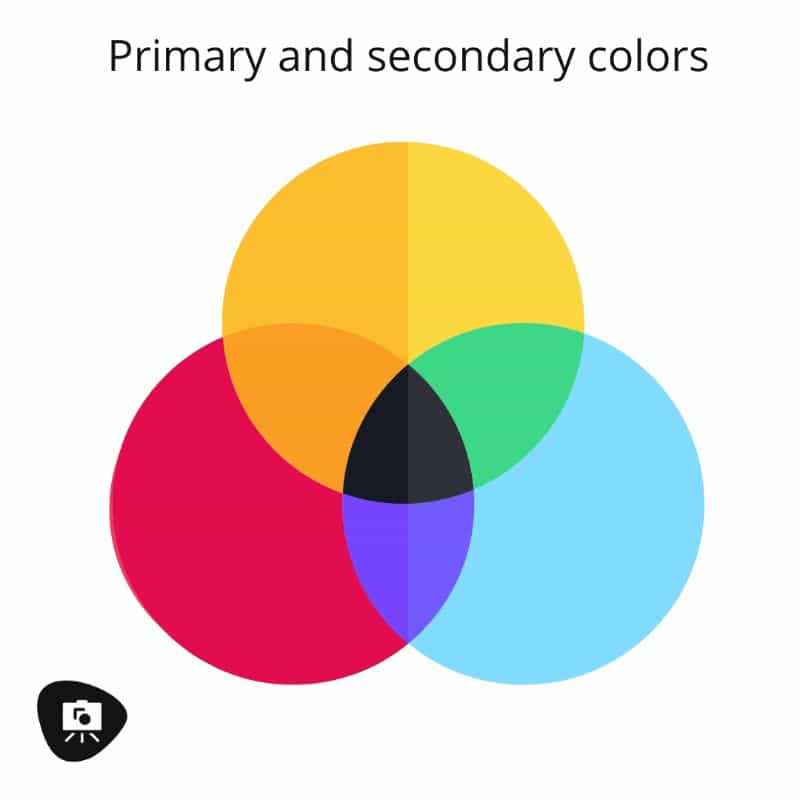
These called secondary colors because they are made by mixing two primary colors together in equal parts.
Tertiary colors
The tertiary colors are red-orange, yellow-orange, yellow-green, blue-green, blue-purple, and red-purple.
These are made by mixing a primary color with a secondary color in equal parts.
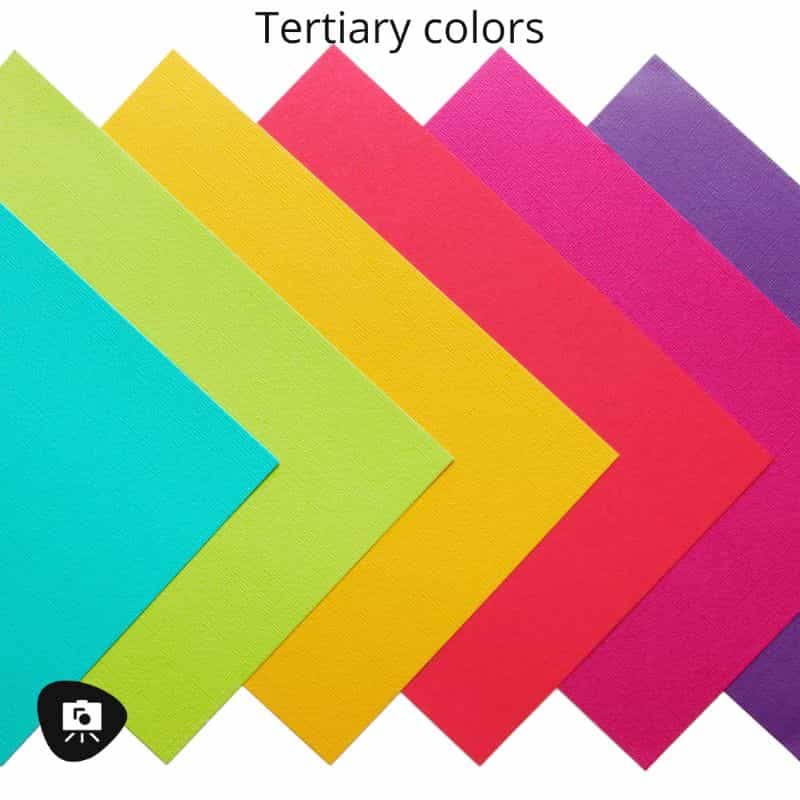
Use the Color Relationships in the Color Wheel to Find a Great Paint Scheme
Now that we know the basics of the color wheel, let’s talk about some of the ways we can use it to find color schemes for our miniatures.
Color theory is about more than just the colors themselves; it’s also about the relationships between colors.
There are four different types of color relationships:
- Complementary colors
- Analogous colors
- Monochromatic colors
- Triadic colors
Let’s take a closer look at each one.
How to Use the Color Wheel to Create a Color Scheme
Complementary Colors
Complementary colors are colors that are opposite each other on the color wheel. For example, red is opposite green, blue is opposite orange, and purple is opposite yellow.
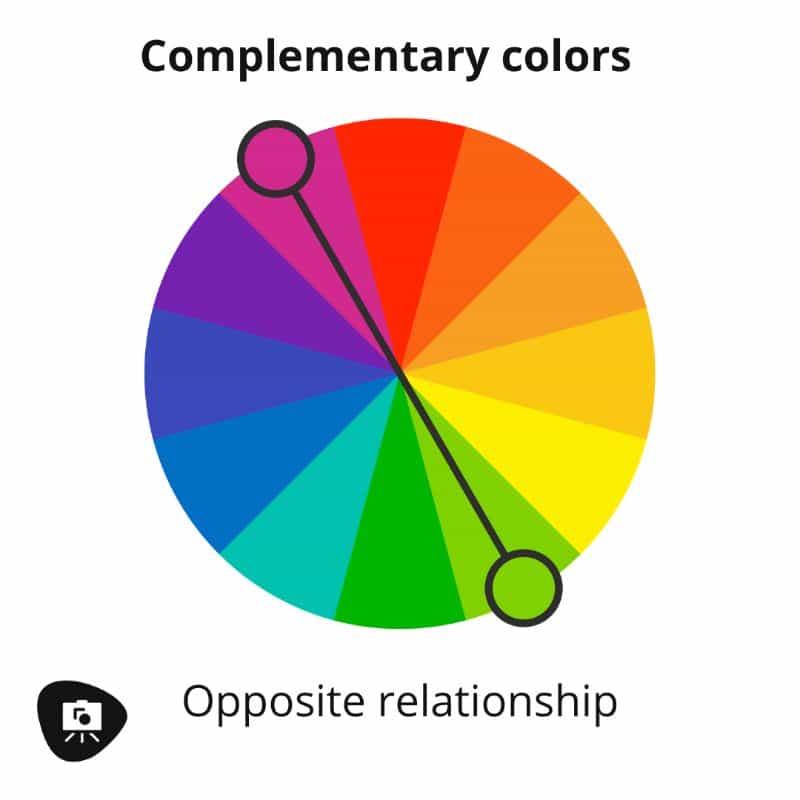
The complementary color scheme is one of the most popular because it’s easy to find two colors that work well together. It’s also a high-contrast scheme, which can be good for making your miniatures pop on the tabletop.
There are a few things to keep in mind when using complementary colors:
One color should be dominant, and the other should be used as an accent.
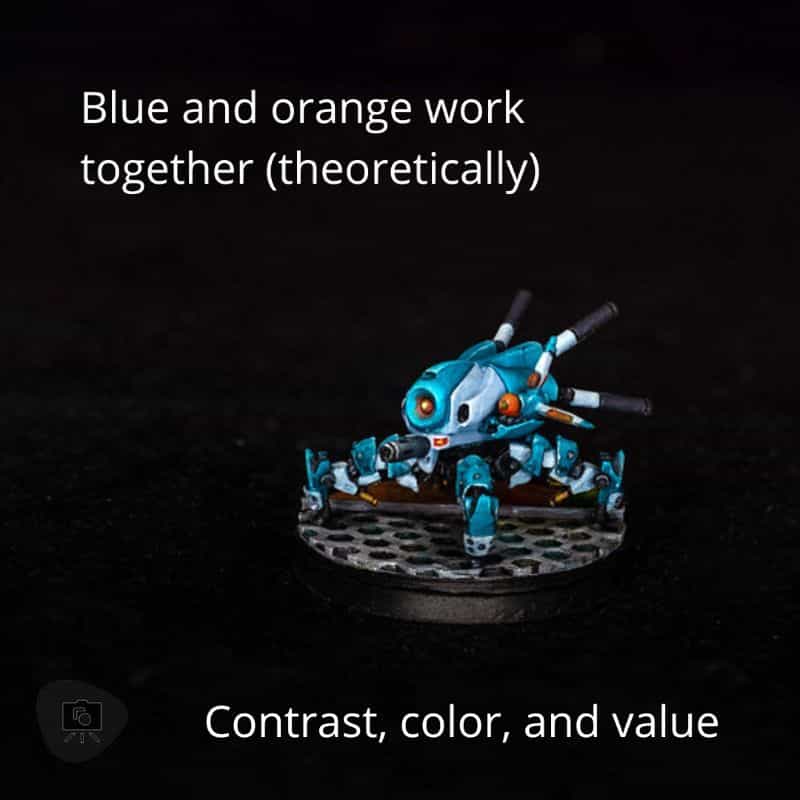
You can use a 50/50 split, but it’s usually best to have one color be dominant.
You can use different shades, tints, and tones of the same color. For example, you could use a light blue as your dominant color and a dark blue as your accent color.
Analogous Colors
Analogous colors are colors that are next to each other on the color wheel. For example, red , orange, and yellow are an analogous color scheme.
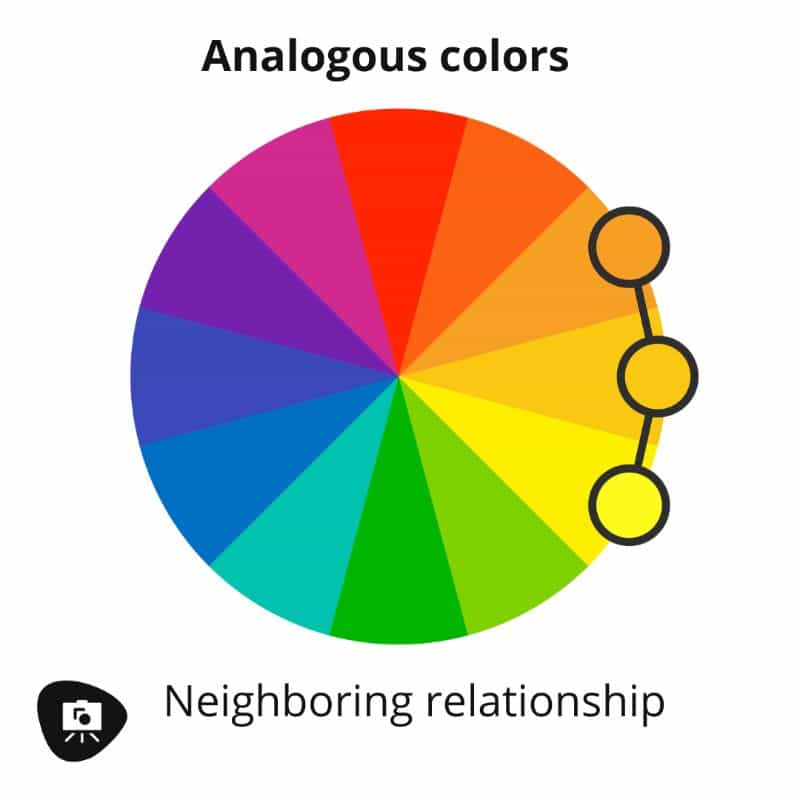
Analogous color schemes are easy to create because you only need to find two or three colors that go well together.
They’re also low-contrast, which can be good for painting more subtle details.
There are a few things to keep in mind when using analogous colors:
One color should be dominant, and the other two should be used as accents.
You can use different shades, tints, and tones of the same color. For example, you could use a light blue as your dominant color and a dark blue and green as your accent colors.
Monochromatic Colors
Monochromatic colors are all the same color, but different shades, tints, and tones. For example, a monochromatic color scheme could be black, gray, and white.
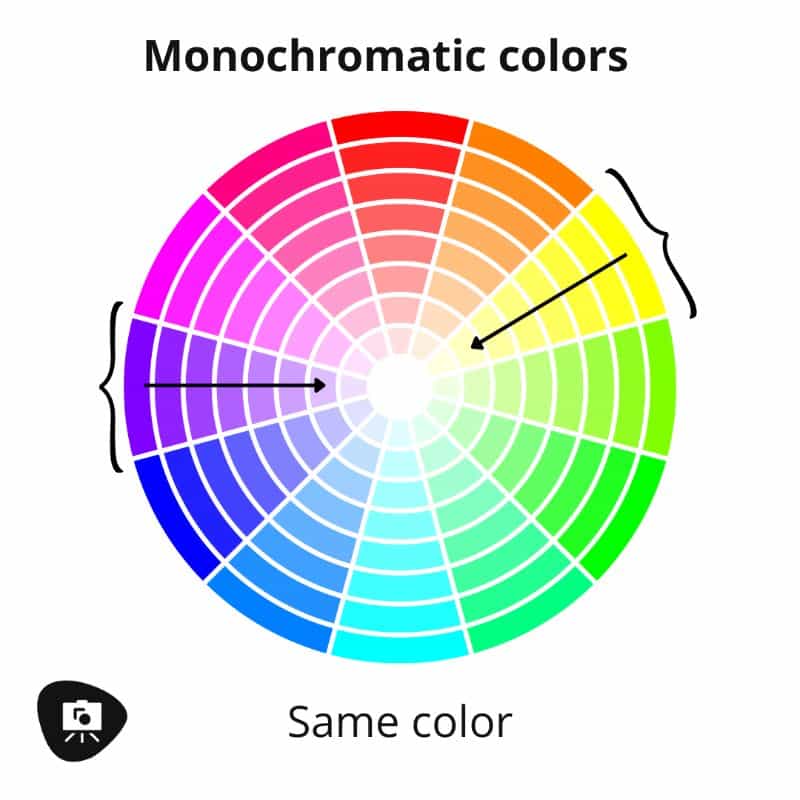
Monochromatic schemes are good for painting models that need to blend in with their environment or for painting large areas of a single color.
There are a few things to keep in mind when using a monochromatic color scheme:
You can use different shades, tints, and tones of the same color. For example, you could use a light blue as your dominant color and a dark blue and green as your accent colors.
You can add interest to a monochromatic scheme by using textures and patterns. For painting minis for tabletop games, a vast majority of you may not think you’ll need to understand monochromatic schemes.
But, if you’re someone like me who loves to experiment, this approach for finding a scheme could be handy (and dare I say, fun!).
Triadic Colors
Triadic colors are three colors that are evenly spaced around the color wheel. For example, the triadic colors of red, yellow, and blue are red-orange, yellow-green, and blue-purple.
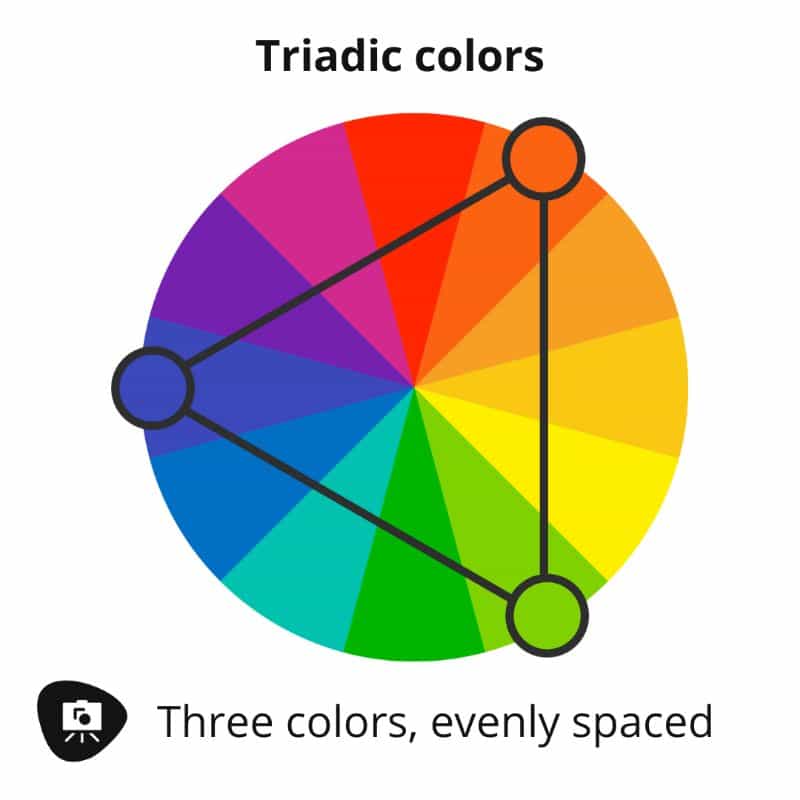
Triadic color schemes are good for painting models that need to stand out from their environment. They’re also high-contrast, which can be good for making your miniatures pop on the tabletop.
There are a few things to keep in mind when using a triadic color scheme:
One color should be dominant, and the other two should be used as accents.
You can use different shades, tints, and tones of the same color. For example, you could use a light blue as your dominant color and yellow tints with green as your accent colors.
You can use a 60/30/10 split, with the dominant color being 60% of the total, the secondary color being 30%, and the tertiary color being 10%.
The 60-30-10 color rule is popular in interior design theory, especially for paint colors for dressing up an interior space in a home or office.
But, it can also be applied to miniature painting.

The rule is simple: 60% of the room (or model) should be a dominant color, 30% should be a secondary color, and 10% should be an accent color.
So, if you’re miniature painting a model that’s mostly blue, you could use a light blue as your dominant color, a dark blue as your secondary color, and a green or purple as your accent color.
Split-Complementary Colors
A split-complementary color scheme is made up of a color and the two colors that are on either side of its complement. For example, the split-complementary colors of red are red-orange, yellow-orange, and yellow-green.
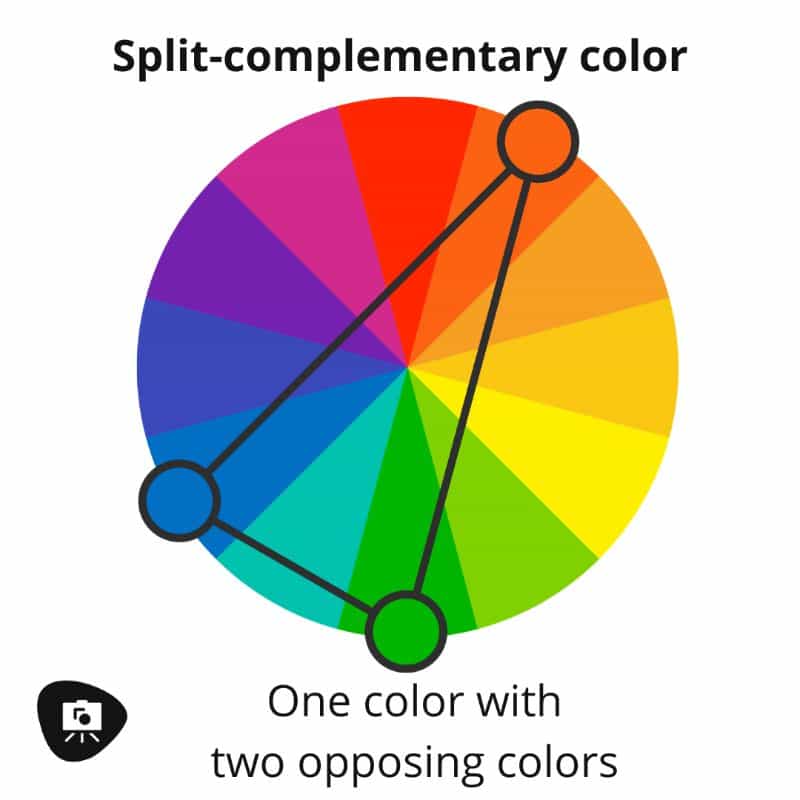
Split-complementary color schemes are a variation of the triadic color scheme and have similar effect on painted miniatures. Here, you can also follow the 60-30-10 rule for how much of each color to use on your model.
A Quick Word About Using Quality Acrylic Paint Pigments
The great thing about using hobby grade acrylic paints from reputable brands is that they are highly pigmented.
Game company brands like Citadel, Vallejo, Reaper, and others have great color options. Take a look at my recommended bundles of these hobby paint sets for painting minis.
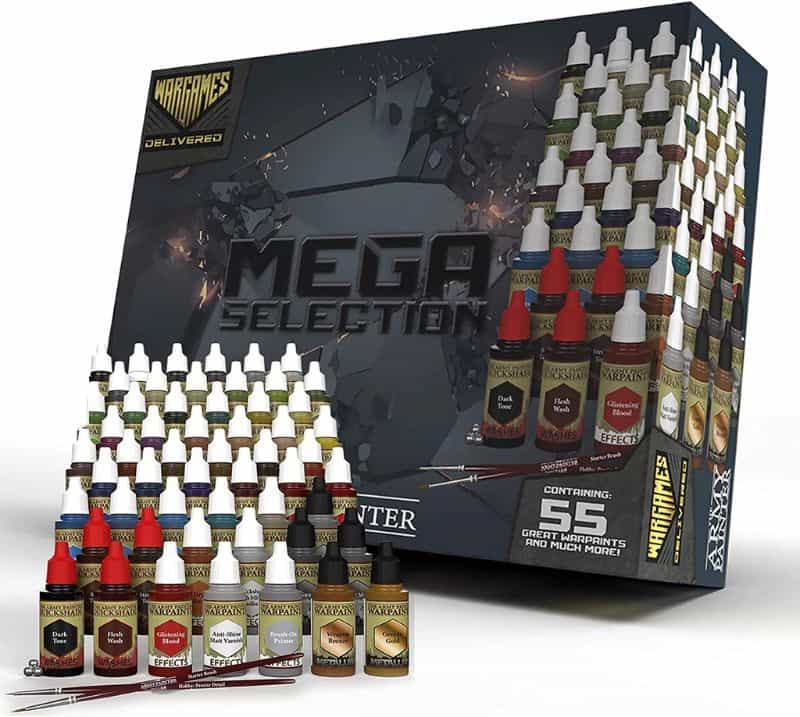
The downside to highly pigmented paints is that they can be tricky to work with, especially for beginners. Remember the axiom for painting any miniature: Thin your paints (with water) for an easier working experience.
RELATED: BEGINNER TIPS FOR PAINTING WARHAMMER MINIATURES
However, it’s worth mentioning that not all brands or formulations are created equal. Some companies use fillers in their paints to cut costs, which results in a product that isn’t as rich in color pigments.
This is especially true for cheap (very cheap) arts & craft store paints. Even budget acrylic paints for canvas painting, e.g., Liquitex BASICS, may not work as well for painting miniatures.
What’s the big deal with craft paint?
Using less pigmented colors means that you’ll have to use more paint to get good coverage and an opaque finish. More paint = more time spent painting = not as fun.
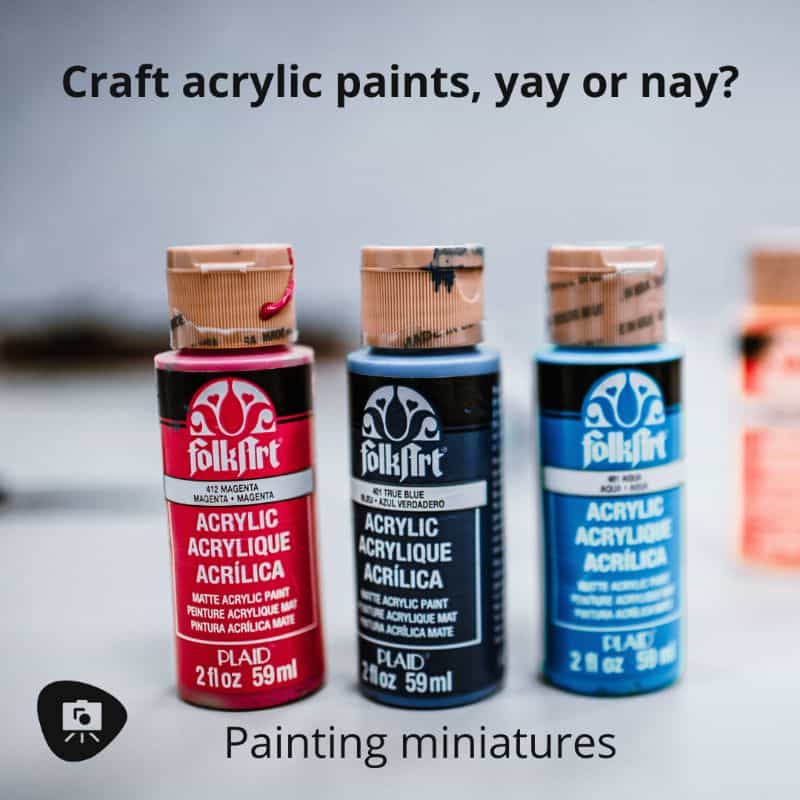
Applying more paint to compensate for poor color coverage also means thicker layers. This can lead to issues with paint adhesion and increases the chances of your paint cracking or flaking off down the road. Worse, you’ll obscure those beautiful fine details on your tabletop minis.
Craft paint tends to build up thickness, quickly, and streak. Ugh.
So, what’s the best way to avoid all these potential problems?
It’s generally worth it to invest in good quality paints formulated for miniature painting, even if they cost a bit more upfront. In the long run, you’ll be happy you did!

Do your research on which brands other painters recommend and then buy good quality paint. It’s worth spending a few extra dollars on paints that will perform well and make your painting experience more enjoyable.
Color Mixing for Painting Miniatures
Now that we’ve gone over the basics of color theory for painting minis, let’s talk about how to mix colors.
For new painters, I suggest using simple ratios.

For example, stick to mixing only two colors at a time with simple proportions. Here’s what I mean. You can mix a 3:1 ratio of your dominant color to white to create a lighter shade. To make a darker shade, use a 1:1 ratio of your dominant color to black.
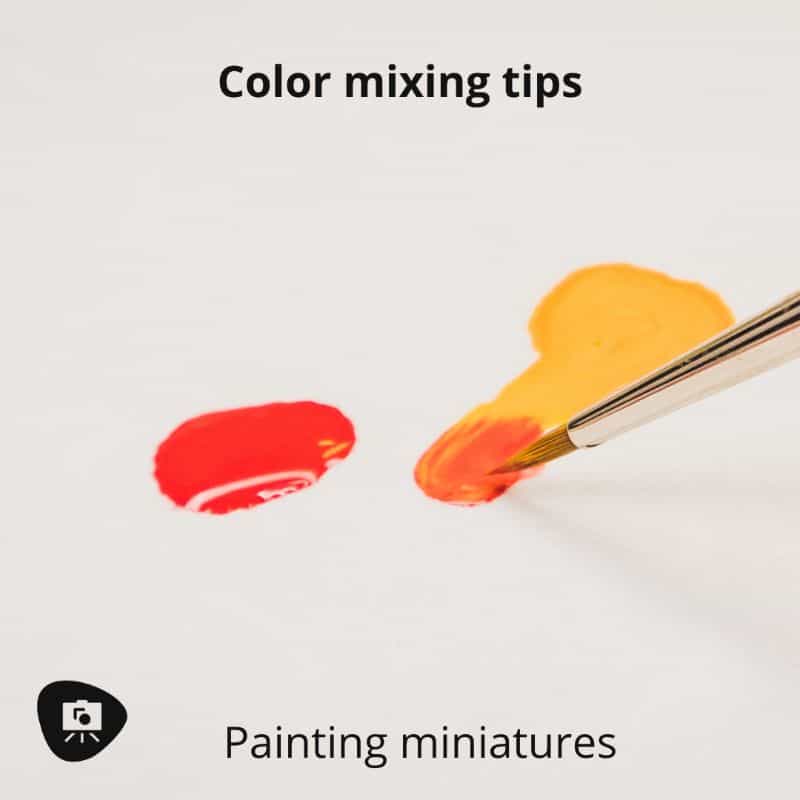
As a dropper and mixing tool, I like using the back of my paint brush handle. The round bit is almost like an eye dropper without the need to rinse it out. Simply dip the back of your brush handle into your paint (from the pot/bottle or from your palette) and create a swatch on a clean surface.
For those looking to make this easier, a wet palette will keep your acrylic paints wet while you work with them.
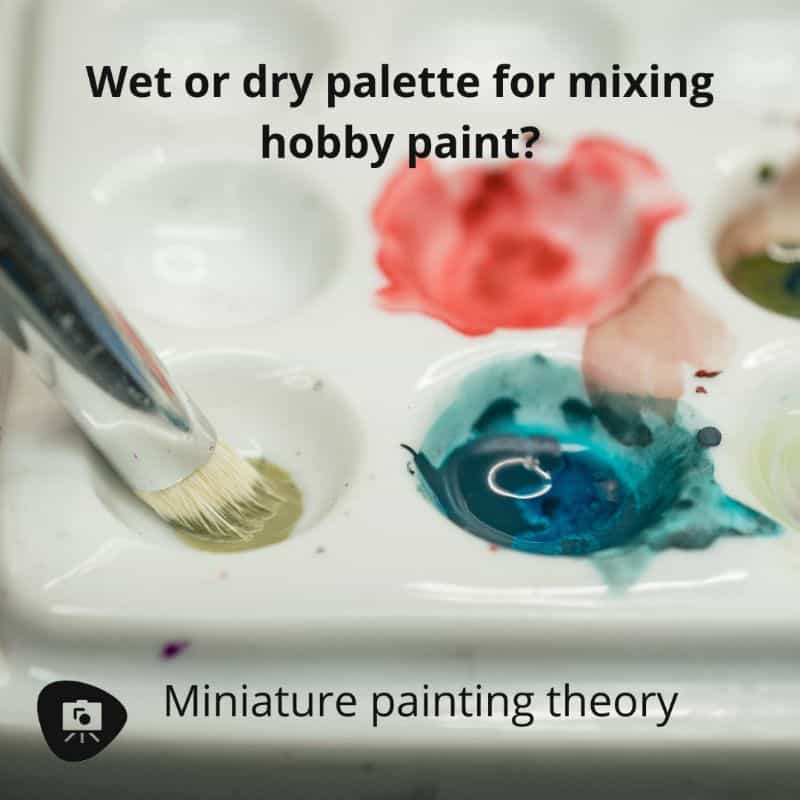
The great thing about using the handle instead of your brush bristles is that you have more precision with how much paint is deposited. This also comes in handy when you want to mix just a tiny amount of paint.
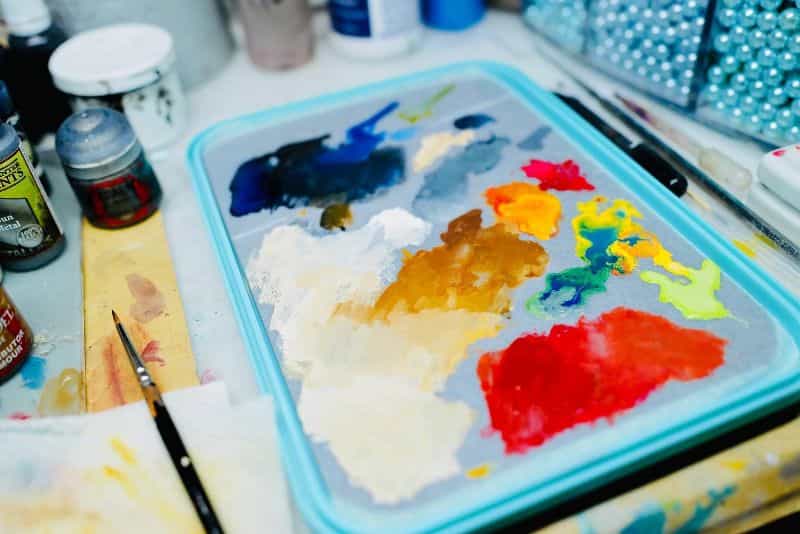
I like to start with a small puddle of each color I want to mix on my palette. From there, I’ll use the back of my brush handle to transfer a bit of each color into the desired mixing ratio. I find it easier to add the darker colors first and then lighten the mixture as needed.
As you become more comfortable with color mixing, you can start to experiment with adding a third color into the mix. Just remember to keep your ratios simple at first!
Conclusion
Color theory is a powerful tool that every miniature painter should understand. By learning about the basics of color theory, you’ll be able to mix colors with confidence and create beautiful shading and highlights on your minis. Again, check out my miniature gallery to see what I’ve done with color.
Do you have any tips for mixing colors? Color theory questions? Share them in the comments below!


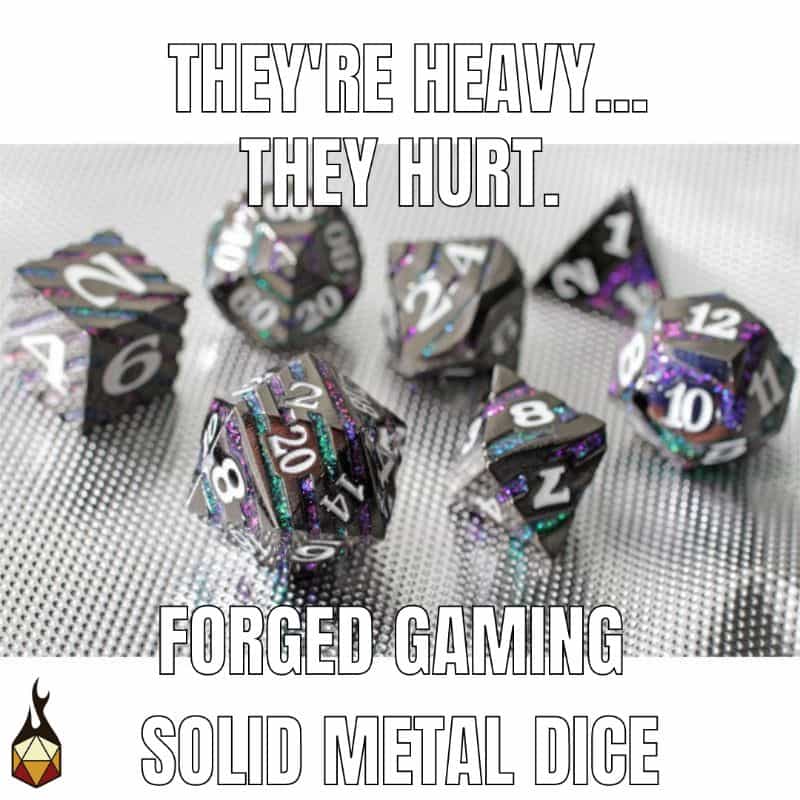


Tangible Day on YouTube (Miniatures and More!)

